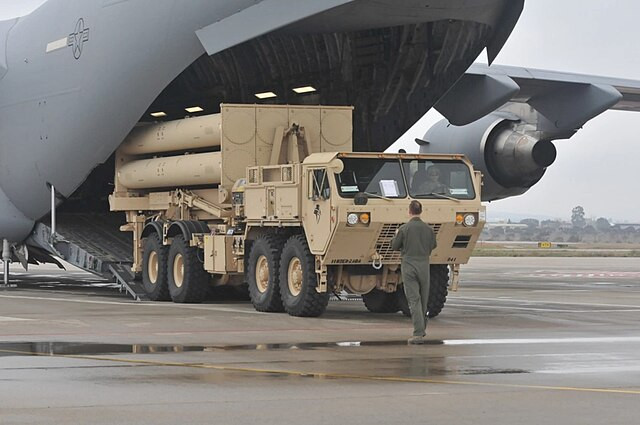The United States will deploy its advanced Terminal High-Altitude Area Defense (THAAD) anti-missile system to Israel along with approximately 100 U.S. troops to operate it, in response to increasing tensions in the region, particularly following recent Iranian missile attacks on Israel. This decision was announced by the Pentagon on Sunday, marking a significant move in bolstering Israel's air defenses amidst growing concerns about a potential military confrontation with Iran.
The deployment comes after Iran launched missiles targeting Israel on April 13 and again on October 1, 2023, in a series of unprecedented attacks. While it is not the first time the U.S. has sent the THAAD system to Israel-having done so previously for training exercises in 2019-the addition of American troops to operate the system highlights the seriousness of the current situation. According to Maj. Gen. Patrick Ryder, Pentagon spokesperson, this action underscores the United States' "ironclad commitment to the defense of Israel" and to the protection of American personnel in the region from further missile threats.
Approximately 100 U.S. soldiers will be responsible for operating the THAAD battery, a number that aligns with typical deployments for this advanced missile defense system. THAAD is specifically designed to intercept and destroy ballistic missiles during their terminal phase, providing a crucial defense against long-range missile attacks. It is viewed as complementary to Israel's existing missile defense systems, such as the Patriot and Iron Dome, which are used to intercept short-range projectiles.
This U.S. deployment follows consultations between Washington and Jerusalem regarding Israel's potential military response to Iran's October missile strike. While Israel is expected to retaliate, U.S. officials have expressed concerns about the scope of such an operation. President Joe Biden, in his first conversation with Israeli Prime Minister Benjamin Netanyahu in almost two months, urged for a proportional response and warned against targeting sensitive sites such as Iranian nuclear facilities or oil fields, which could escalate the conflict further.
Since Hamas launched its surprise attack on Israel on October 7, 2023, the U.S. has significantly increased its military presence in the Middle East. In addition to the THAAD system, the U.S. has deployed more warships, aircraft carriers, and bolstered air defenses across the region, particularly in the eastern Mediterranean, Red Sea, and Arabian Sea. The U.S. military presence has also been expanded to include additional troops in Cyprus to assist with potential evacuation operations.
The Wall Street Journal was the first to report on the THAAD deployment, noting that this defensive measure is seen as vital in light of the growing threats posed by Iran. The THAAD system, developed by Lockheed Martin, is considered one of the most advanced anti-missile defense systems in the world, capable of intercepting missiles at a range of 150 to 200 kilometers (93 to 124 miles). Each THAAD battery typically consists of six truck-mounted launchers, 48 interceptors, and radio and radar equipment, requiring a full complement of 95 soldiers to operate effectively.
The deployment of THAAD follows an Iranian warning posted on X, a platform formerly known as Twitter, where Iranian Foreign Minister Abbas Araghchi cautioned the U.S. against further military involvement in Israel. Despite the warning, the U.S. remains committed to supporting Israel's defense against any further missile threats from Iran.
Israel is reportedly preparing for a military response to the October 1 attack, in which Iran fired approximately 180 missiles at Israeli targets. While details of Israel's potential retaliation remain unclear, the deployment of THAAD will provide an additional layer of security in the event of further Iranian aggression. The presence of U.S. troops to operate the system also signals Washington's deep involvement in the security of its key ally in the Middle East.






